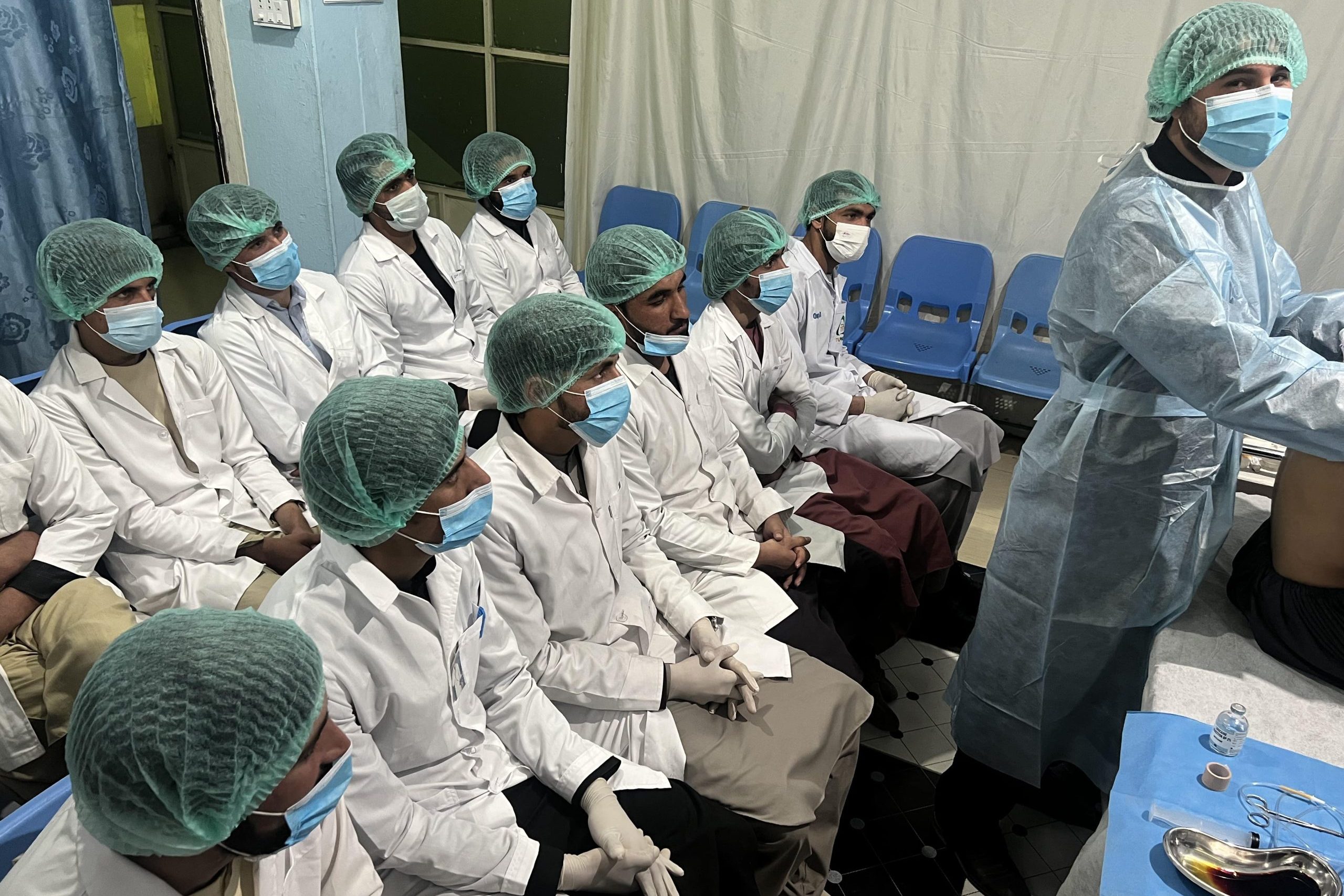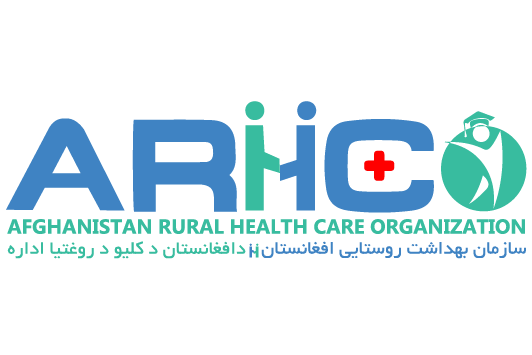Who We Are
ARHCO has well- experienced team of professional staff in the areas of Health Care, Education, Eye Care, Nutrition services, and Humanitarian Assistance.
ARHCO has well- experienced team of professional staff in the areas of Health Care, Education, Eye Care, Nutrition services, and Humanitarian Assistance.


Increasing poverty have vast impacts of on overall health and social indicators. For example, Afghanistan has one of the highest mortality rates in the world, and malnutrition of under five children has increased to 37 percent in the world that is a national level concern for the country and Ministry of Public Health.
ARHCO is registered with ministry of economy #5891 And was established in September 2023 with a mission to provide health care service, education facilities, emergency aid and humanitarian assistance to Afghan people in need. ARHCO now operates solely in Afghanistan and over the coming years it would be transformed into the one of Afghanistan’s foremost Health Care NGOs.
Given local context of the country, communicable diseases remain a major burden for the Ministry of Public Health along with increasing number of non-communicable diseases and road traffic accidents (NCDs & RTAs). For instance, the World Health Organization (WHO) estimates that the incidence of TB in Afghanistan is 65,000 and that the number of annual deaths is 11,000 (WHO 2017). In 2017, out of the estimated incident cases, approximately 72% were notified and diagnosed. Among the 2015 new and relapse cohorts, the treatment success rate was 88%. Despite these facts, 97% of Afghans live in administrative areas where directly observed therapy, short course (DOTS) is available. Over 7 million people live in Nangarhar, Kandahar, Herat, Balkh, and Baghlan provinces in Afghanistan. Within these crowded provinces, the Ministry of Public Health’s (MOPH) National TB Control Program (NTP) has succeeded in detecting 16,272 all-form TB cases and placing them on treatment in 2017 alone.
Our Mission & Vision.
What makes us different?
In addition to specific cost management and control measures at the program level; we believe, effective management and control of costs require specific measures at the individual project contract level as well.

BENIFICIARIES
ARHCO services will benefit both groups and individuals disregarding their racial, ethnic, geographic, linguistic, religious, sex and age differences.
Following are the key categories of ARHCO beneficiaries:
Poor and remote communities and people especially (women and children)
Communitygroupsincludingcommunity-basedorganizations(CBOs)
Community Development Councils (CDCs), Civil Society Organizations (CSOs) and non- governmental organizations (NGOs)
Civil Servants Marginalized groups such as Women, Ethnic and Religious minorities, Nomads, Internally Displaced people (IDPs) and Youth
- Development and Health Professionals Social Workers University, School students and teachers Policy makers
- Most vulnerable and affected people who needed humanitarian assistance have access to food, potable drinking water, sanitation facilities, hygiene
awareness, and secured livelihoods for income generation.
- Assess the overall ability of the Afghan population to meet their humanitarian needs, particularly for women and children, with assistance.

OBJECTIVES
To contribute towards its strategic goal, ARHCO pursues following specific objectives:
- Objective 1: Enhance the health conditions of the Afghan population, with a particular emphasis on women and children, by providing quality healthcare services, focusing especially on marginalized and remote underserved communities.
- Objective 2: Provide comprehensive, integrated mental health and social care services within the community, with a special focus on women, children, and at-risk populations.
- Objective 3: Provide comprehensive, integrated mental health and social care services within the community.
- Objective 4: Collaborate with specialized entities and institutions to reduce avoidable blindness, especially in underserved and remote areas of Afghanistan.
- Provide promotion, preventive, curative, and rehabilitative eye-care services in alignment with national health strategic plans and the realization of Vision 2020.
Objective 5: Enhance the quality, accessibility, and affordability of primary, secondary, and higher education for the eligible population, fostering affiliations with nationally and regionally accredited educational institutions.
Objective 6: Assess the overall ability of the Afghan population to meet their humanitarian needs, particularly for women and children, with assistance.
CORE VALUES
Transparency and Accountability
Innovation and Creativity
Impartiality
Professionalism
Integrity
Social Justice
Neutral

ARHCO endeavors to reach the most disadvantaged groups in Afghan society often under very difficult circumstances. Among those with whom ARHCO works are: communities that requires health care services, poor families, women, the unemployed and the uneducated, returning refugees, internally displaced persons (IDPs) as well as a variety of community-based organizations.
Four decades of insecurity and conflict in Afghanistan has had severe repercussions on the situation of Afghan people, who have long suffered the consequences of civil war, drought, pervasive poverty and institutionalized discrimination. In addition, Afghanistan has had the largest refugee repatriation in the world during the last four decades. All these mentioned devastating factors in different aspects of life have had negative impacts on the health, economy and social wellbeing of the indigenous populations.
ORGANIZATIONAL STRUCTURE
The main governance of ARHCO lies within a General Assembly, which consists of volunteers and committed members of the organization. The General Assembly is the supreme body of the organization and is responsible for the approval of organization’s charter, election of the chairperson and members of board of directors and Managing Director as well as the board of directors take policy and strategic level decisions. Board Director (BoD) consists of no fewer than 5 and no more than 7 members, do not have to be staff of ARHCO, except the Managing Director. The Board membership is decided by the General Assembly and includes intellectuals, development workers, field managers and experts. The BoDs develops and approves ARHCO priorities and strategic level issues and provides valuable advice and guidance to the organization from time to time. Board members also represent ARHCO in important and fundraising meetings. The sphere of responsibilities of the Board of Directors and its decision making authorities will be defined in specific document. ARHCO has a very simple organization structure; to ensure decision making and easy access to information. Operational level decisions are being made by management team led by Managing Director, while the strategic and policy level decisions are subject to approval of Board of Directors who hold 3 meetings annual one in each four months.
COMPETNECIES
ARHCO has well- experienced team of professional staff in the areas of Health Care, Education, Eye Care, Nutrition services, and Humanitarian Assistance. ARHCO professional staff members supported by Board of Directors (BoDs) have recently developed following important policy documents for the organization.
- Financial Management and Budgeting Policies & Procedures
- Procurement and Logistics policy & procedure
- Human Resources and Training policy and procedures
- Monitoring and Evaluation policy and procedures
- Internal Audit Policy and Procedures
- Gender Policy and Procedures
SWOT ANALYSIS
STRENGTHS
- Qualified and professional staff
- Vast experience in health care and eye care
- Required policies and procedures exists
- Strong relations with communities and full knowledge of Afghanistan custom and Culture
- Result-based management approaches
WEAKNESSES
- Lack of project management information system
- Lack of strong M&E system
- Lack of policies and procedures for security
- Lack of having qualified staff for proposal development
THREATS
- Limited access to funding
- Difficulties in signing MoUs
- Low knowledge of relevant government
- bodies at field level
- Exchange rate fluctuation that causes huge exchange loss
OPPORTUNITIES
- Increase in funding for humanitarian assistance
- Security
- Access to remote areas and most desperate and far communities
- Capacity Building of newly established NGOs by international communities
Give Money.
Will you change a childu2019s
nlife today?
Duis aute irure dolor in reprehenderit inu00a0
esse cillum dolore eu fugiat nulla pariatur.
Give Time.
Share your time, share your
nlove for community
Duis aute irure dolor in reprehenderit inu00a0
esse cillum dolore eu fugiat nulla pariatur.
